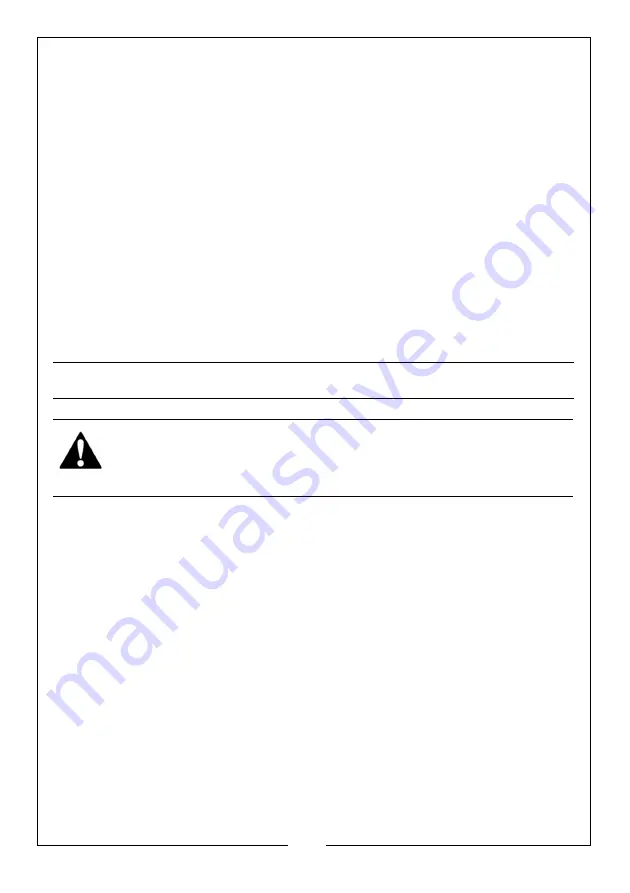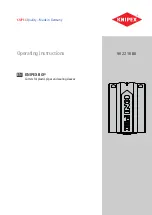
5
Parts & Service: 020 8988 7400 / E-mail: Parts@clarkeinternational.com or Service@clarkeinternational.com
3. Use clamps, or vices to hold a loose workpiece. Failure to secure the
workpiece could result in personal injury.
4. Inspect the blades before use.
DO NOT
use if damaged.
5.
ALWAYS
wear a face mask when using the tool as protection from
airbourne particles. Avoid disturbing existing dust and minimise the
scattering of dust in the workplace environment. Take steps to control the
dust at the point of emission.
TRANSPORTATION AND STORAGE
1.
NEVER
carry the tool by the air supply hose.
2.
NEVER
carry the tool with your finger on the trigger.
3. When not in use the tool should be disconnected from the air supply and
stored in a dry place out of the reach of children.
4. Avoid storing the tool in environments where the temperature is below 0
o
C.
COMPRESSED AIR REQUIREMENTS
Use only clean, dry, regulated compressed air as a power source.
Air compressors used with the tool must comply with the appropriate
European Community Safety Directives.
A build-up of moisture or oil in the air compressor will accelerate wear and
corrosion in the tool. ensure any moisture is drained from the compressor daily
and the inlet filter is kept clean.
If an unusually long air hose is required, (over 8 metre by up to 15 psi to
maintain air pressure at the tools), the line pressure or the hose inside diameter
may need to be increased.
For optimum performance it is recommended that a 3/8” I/D airline hose is
used.
A typical air line layout is shown below. If an automatic in-line filter/regulator is
used, it will keep the tool in good condition, but should be regularly checked
and topped up with oil. SAE 10 oil should be used, and the lubricator adjusted
to approx 2 drops per minute.
WARNING: COMPRESSED AIR CAN BE DANGEROUS. ENSURE THAT YOU
ARE FAMILIAR WITH ALL PRECAUTIONS RELATING TO THE USE OF AIR
COMPRESSORS AND COMPRESSED AIR SUPPLIES.
Summary of Contents for 3110472
Page 16: ......


































